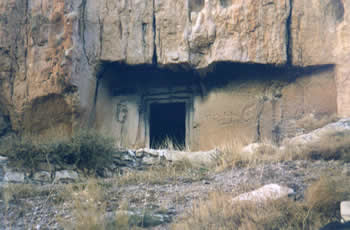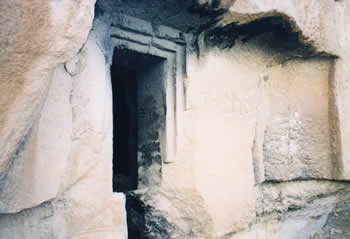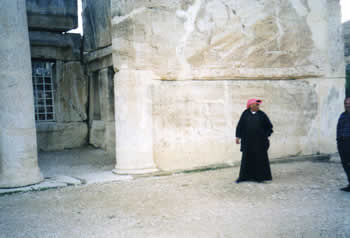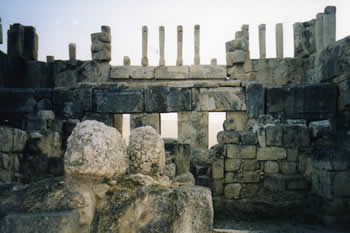|
Annals of a Jewish Traveler: Qasr Al-Amir
By Jay Levinson
The Roman era historian, Josephus, relates (Antiquities XII-XIV) an interesting story. For twenty-two years during the reigns of Ptolmey III and Ptolmey IV, Joseph of Tobiades was a tax collector based in Jerusalem. In 209 BCE this aging Joseph sent his son with lavish gifts to Hyrcanus to celebrate the birth of Ptolmey V. The son became a favorite of Hyrcanus, whose brothers became jealous and attempted to kill him. He fled Jerusalem and took refuge in the Trans-Jordanian desert, where he built a well-guarded fortress.
On 13 June 1818 Charles-Leonard Irby (1789-1845) and James Mangles (1786-1867) discovered that fortress, which the local Arabs called Qasr Al-Amir. Irby was an historian; Mangles was a botanist. This was part of the journey around the Dead Sea and northward through the Trans-Jordan and Syria. Today the Jordanian Ministry of Tourism & Antiquities maintains the ruins of the fortress in Wadi Seer, a twenty minute trip by car from Amman.

Outside of the Escape Tunnel
The son of Joseph was not righteous tax collector by any means. He left a legend of having slaughtered the local population. He closeted himself in his fortress, which was built with considerable thought. Security was of paramount concern. The entrances, including a hidden passage through a cave, were narrow, so that enemy troops could not storm the facility. Large lions carved in stone were placed on the fortress walls as a symbolic warning to any soldier daring to approach.

The Remains of the Stone Lion Guarding the Gates
The son of Joseph was constantly afraid for his life. When he realized the power of Antiochus and saw his foe's army approaching, Josephus reports that he committed suicide rather than being taken a captive, certainly to be tortured. Antiochus then confiscated all of his property.

Inside Entrance of the Escape Tunnel
A visit to the fortress grounds is without charge, but for a small tip the caretaker will open the locked gate and let you visit. There are no signs describing the parts of the fortress, but even a casual look at the stones impresses the visitor. Views from the walls show how guards could identify any approaching armies.
The fortress has been poorly prepared for tourists. Handrails are missing, and in some areas it is difficult to get firm footing. A visit is not recommended on a damp day, when the stones of the fortress are slippery. A
"must" is the caretaker's office, where written historical explanations are available in Arabic, French and English.

Inside Qasr Al-Amir
Several kilometers away, in the village of Iraq Al-Amir, there is a technological school for girls. There you can buy woven handicrafts at very reasonable prices. Opposite the village (about two kilometers from the fortress), there is a series of caves, which some locals contend once extended underground to the fortress.
The closest trek to Qasr Al-Amir by public transportation from Amman is to take two busses, then hike for 20 to 30 minutes. Nor is travel by rental car recommended due to lack of signs (even in Arabic). The best way to see the ruins is to travel with a Jordanian driver. The scenery on the way is breathtaking in many places.
|
At this time there is a travel advisory of the Israel Ministry of Foreign Affairs concerning travel to Jordan.
|
~~~~~~~
from the April Passover 2006 Edition of the Jewish Magazine
|
